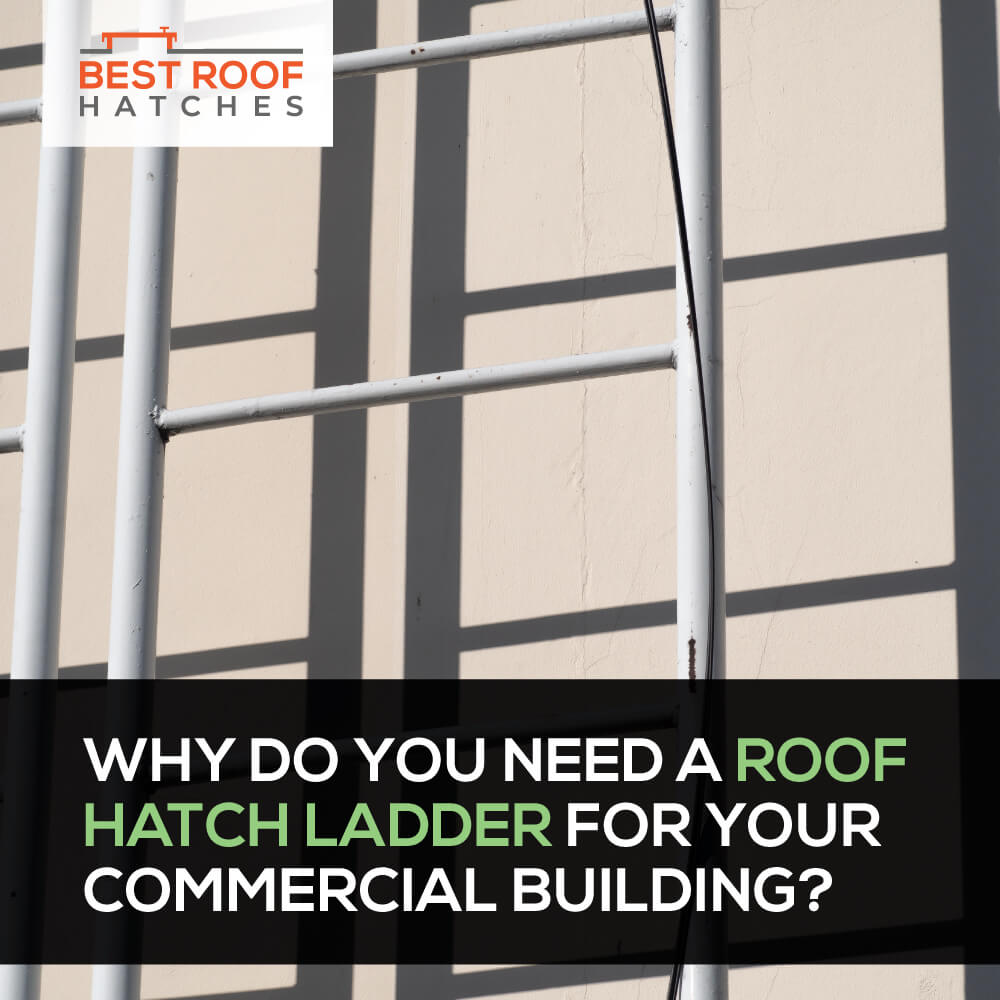Share this
Why Do You Need a Roof Hatch Ladder for Your Commercial Building?
Posted by Best Roof Hatches on 2022 Apr 27th
Maintenance is necessary for extending the functional lifespan and value of structures. Owners and investors know how vital it is to ensure that the building functions as intended while ensuring occupants' health and convenience.
The roof area is one of the most vulnerable places in your building, and there are several approaches to maintain and secure this structure effectively. Installing roof hatches let your personnel have an entry point to do maintenance work. It provides a way for them to move safely and quickly, thus making things more efficient.
Aside from that, you need ladder access for roof hatches to make them even more convenient and safer, especially if you have regularly scheduled maintenance work. It is an essential component for your roof hatches to comply with regulations in your area.
What is Ladder Access?
Ladder access is combined with the roof hatch to provide an entry point for your personnel whenever they inspect, transport equipment, and do their various maintenance tasks. People must understand their functions to optimize their benefits further.
Ladder Safety
Anyone who works at a height must have a fundamental understanding of ladder safety. Falling from staircases and ladders are among the most prevalent causes of injuries. People need to know the most common dangers and how to safely use commercial roof access ladders.
Roof Access Hatch With Retractable Ladder
Retractable ladders fold up entirely into the ceiling, often known as attic ladders. The stringers' scissor configuration enables this action, allowing movement. The retractable ladders have a built-in casing installed in the ceiling hole, and the wooden hatch elegantly covers the entire structure.
Manufacturers of retractable ladders must undergo testing to meet local or OSHA standards. The essential requirements for user safety are that the rungs can support a minimum load of 150 kg, that the inclination of the ladder is roughly 61 degrees so as not to stand at an excessively steep angle, and that the rungs of the ladder have a predetermined space between them.
Because these are minimum requirements, some people prefer to add extra fixtures and fittings to their roof access ladder installation to improve its safety features. The telescopic handrail that comes standard on all retractable ladders is one of these features.
Roof Access Hatch With a Fixed Vertical Ladder
The use of fixed vertical ladders is typical when the elevation of the roof access hatch and the completed floor are significantly different, such as in factory warehouses. EN 14122 is the European standard that applies to similar vertically positioned ladders. The most well-known regulation is that vertical ladders with a height of three meters or more must have a cage design to keep the person from falling over.
Because fixed cage ladders are common to access high rooftops, the standard additionally mandates that rest platforms be built every six meters on ladders that are ten meters or longer. Furthermore, the spacing between the rungs must be around 250 and 300 mm, the rungs' breadth must be within 400 and 600 mm, and the rungs' diameter must be at a minimum of 20 mm. There should also be an anti-slip feature on the rungs.
Roof Access Hatch With Extension Ladder
You can install extension ladders in practically any situation where the reduced or regular ceiling is no higher than 3.25 meters from the finished floor. These ladders, however, are subject to OSHA ladder roof access regulations, which outline the various aspects of the ladders and the standards that you must meet.
Other guidelines necessitate having the rungs tested with a load of 265 kg, and the ladder must support a working load of 150 kg.
Risk Assessment
You can never be too cautious when it comes to ladder safety. Even a 1-meter fall can result in significant injury. When utilizing standard tools like ladders, conducting rigorous risk assessments is critical to remaining safe and avoiding significant damage. Additionally, never underestimate the importance of guardrails for your roof hatch.
Even though building roof access ladders are standard equipment for many jobs, you must never lose sight of their dangers. Keep in mind the risks of falling and the potential consequences for yourself and your occupants.
The Takeaway
There is a wide range for roof hatches applications and roof access ladder regulations. You can always ask for professional help in distinguishing what type best fits your location and needs. They can assist in navigating the nuances of various rules and provide the best possible options for your settings and other advice that you may need as you work on your project.
Best Roof Hatches is your place whenever you need high-quality roof hatch products. We have a wide variety of roof hatch products made from robust materials and categorized for your convenience. We are delighted and eager to serve you! Call now at (800) 431-8651 for your inquiries and purchases.

